Today’s Deal: Save 80% on Risk of Rain!*
Look for the deals each day on the front page of Steam. Or follow us on twitter or Facebook for instant notifications wherever you are!
*Offer ends Sunday at 10AM Pacific Time Website: LINK
Website: LINK

Today’s Deal: Save 80% on Risk of Rain!*
Look for the deals each day on the front page of Steam. Or follow us on twitter or Facebook for instant notifications wherever you are!
*Offer ends Sunday at 10AM Pacific Time Website: LINK
Website: LINK
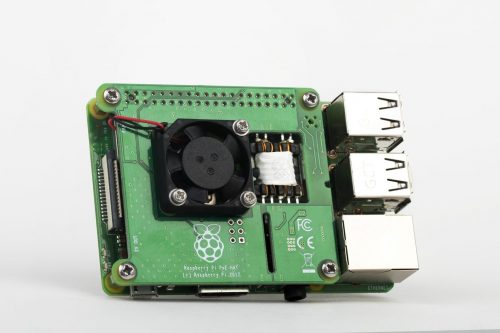
One of the neat new features of the Raspberry Pi 3 Model B+ is its support for IEEE 802.3af Power-over-Ethernet (PoE). This standard allows up to 13W of power to be delivered over the twisted pairs in an Ethernet cable without interfering with the transmission of data. The Raspberry Pi board itself provides a PoE-capable Ethernet jack and circuit protection components; the power regulation electronics, which would be too costly and bulky to include on the main board, live on a separate HAT.

The Raspberry Pi 3B+ wearing a PoE HAT
When we announced the 3B+, we revealed that an official Raspberry Pi PoE HAT was in the works and, after a few unforeseen production delays, we we released this HAT at the end of August. Feedback was, and remains, generally very positive; but fairly quickly, we started to see some reports from users who were experiencing issues.
The problem they reported was this: when powering certain Raspberry Pi units via the PoE HAT, it was not possible to draw the full rated current from the USB ports.
Our 5V USB output, denoted VBUS, is fed by the main 5V rail via a current-limiting switch. This switch is designed to protect the system by detecting short-circuit, over-current, or reverse-voltage events, and disconnecting the USB ports in response. Our current-limiting switch is set to a limit of just over 1A.
Despite the PoE HAT’s ability to supply up to 2.5A, the experiments we ran in response to the reports suggested that, when it was used to supply some boards, the USB supply would trip out at a much lower current. Mice and keyboards worked fine, but higher-current devices such as wireless dongles and hard disks would fail.
Our initial theory was that the PoE HAT was injecting noise into the Pi via the 5V rail, and that this was somehow upsetting the switch. However, we were able to rule this out, since we found no evidence of high-frequency noise at the input to the switch. Another theory was that the flyback transformer’s close physical proximity to the switch was somehow coupling noise in. But we were able to rule this out as well: we showed that the behaviour persisted when the HAT was connected using a right-angle header, which moves the power electronics away from the Raspberry Pi.
The PoE HAT works by converting the incoming 48V from the Ethernet lines to 5V using a flyback transformer. In simple terms, the primary side of the transformer is switched across the 48V, and energy is stored in the transformer in the form of a magnetic field. The primary is then disconnected and the magnetic field collapses. This changing magnetic field induces a voltage (scaled based on the transformer turns ratio) in the secondary, which is rectified by a schottky diode and output capacitance. This output capacitance is formed from the output capacitors on the PoE HAT itself, the capacitors on the Raspberry Pi 5V rail, and, when the switch is on, the VBUS reservoir capacitors.
The switching frequency of the flyback transformer is relatively low (~100 kHz). This means that when the system is under load, each switching cycle must transfer a relatively large amount of energy. During each cycle, the 5V rail is discharged according to the load on the system, and charged up again by the flyback’s secondary, dumping more energy into the caps. In each cycle, a spike of high current is pushed through the output diode into the capacitors.
To cut a long story short, putting a current probe on the input to switch showed large current spikes, as energy from the flyback made its way into the VBUS reservoir capacitors. This was expected. However, it turned out that the switch was erroneously registering these spikes as true over-current events. The switch is supposed to have a filter that allows it to ignore brief spikes, but we discovered that only one of the two approved versions of the switch did this correctly.
It’s a truism that if you don’t test an aspect of a design, it will certainly be broken. Those of us with a Broadcom background sometimes refer to this as Alan Morgan’s rule, after its most enthusiastic proponent.
Extensive testing over all configurations, operating parameters, and use cases is the only way to minimise the likelihood of releasing a product with a hardware issue. Even relatively simple hardware can end up catching you out by throwing up some unexpected bug or issue. And even the big guys with huge development teams and test labs occasionally mess things up — anyone remember the Pentium FDIV bug?
We made several mistakes with the first version of the PoE HAT:
It’s embarrassing to have released a product with a bug like this, but it’s a lesson well-learned, and we will be improving our internal processes to prevent a recurrence.
Fortunately, this bug turned out to be easy to fix. We designed an L-C filter to apply further smoothing to the output current from the HAT. The filter consists of a little extra input and output capacitance and a 4.7µH inductor (chosen to have a suitable current rating and DC resistance), as well as 330mR resistor in parallel to provide damping. We were even able to wrap the mod up in a little mezzanine PCB that fits neatly underneath the board.
Once we had confirmed that there was a problem with the PoE HAT, we took the product off sale, and recalled and reworked the outstanding units. We are now happy to announce that most Approved Resellers should now have the revised boards in stock. We believe that most people who have been affected by this issue have already returned their PoE HATs for a refund; if you’re experiencing issues and haven’t yet returned your product, you can get in touch with your reseller to arrange a replacement.
I’d like to thank the members of the Raspberry Pi engineering team, our contract manufacturing partners Taijie, our licensee partners and Approved Resellers, and also the community members who kindly tested prototypes of the fixed board design. This hasn’t been the easiest product launch in our history, but hopefully the lessons learned have set us up well for the future.
Website: LINK
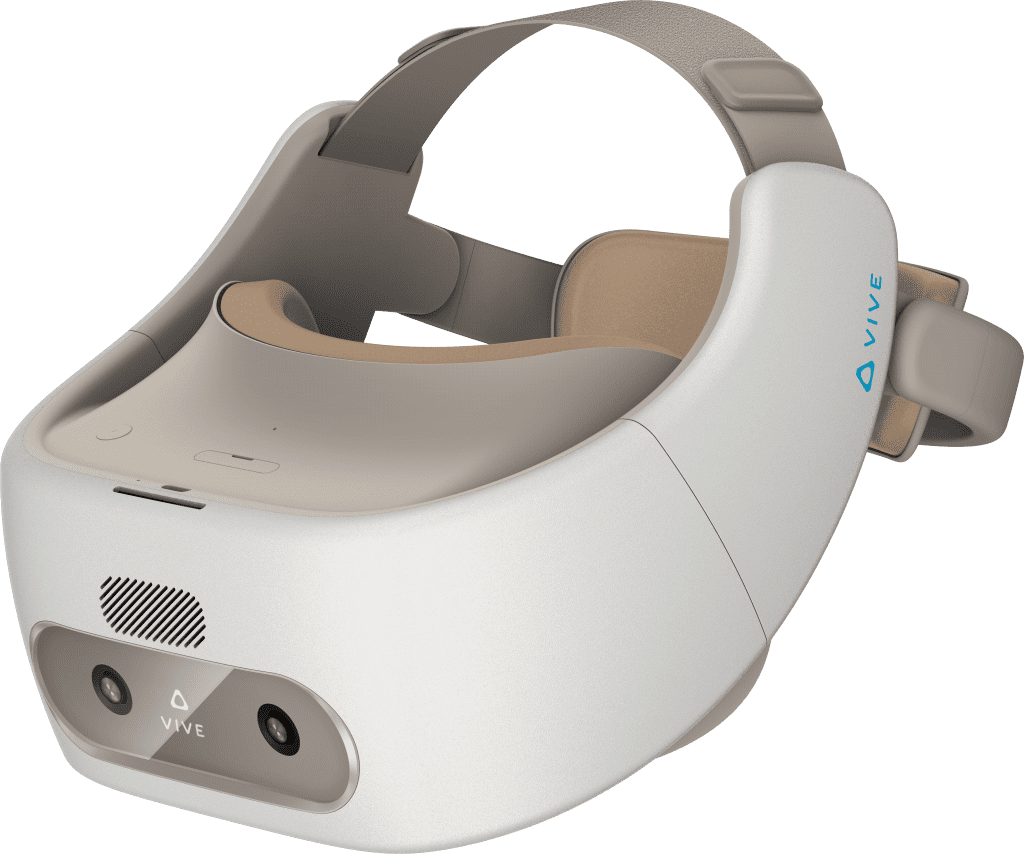
Today at a press event in San Francisco, HTC Vive announced a premium virtual reality experience for the enterprise market, including a new platform, new hardware, and new software available specifically for commercial use. This launch reinforces Vive’s increased commitment to bringing best-in-class design and software expertise—paired with the world’s best VR hardware—to businesses of all sizes. With this complete solution powered by Qualcomm® Snapdragon™ 835 Mobile VR Platform the enterprise market can now create, collaborate, and engage in new and effective ways with employees and customers alike. Companies across the globe such as SimForHealth, and the Volkswagen Group are already implementing Vive for training, simulation, and product design purposes.
Today, Vive is launching a portfolio of premium products in Western markets, including VIVE FOCUS™, a new standalone HMD for enterprise; VIVE WAVE™ VR SDK, the quintessential open VR platform for developers to create content for standalone devices; and VIVE Sync, a new enterprise collaboration tool.
Vive Focus: The Most Powerful Standalone VR Experience
Through Vive Focus, Vive offers the most complete and powerful standalone VR experience available for businesses on the market today. With this launch, Vive Focus will be available in 37 markets worldwide. Vive Focus is powered by the Vive Wave platform and content from VIVEPORT™, this innovative standalone headset is ideal for businesses that want a truly mobile VR experience. It offers a stunning combination of power and portability and the highest resolution graphics available on a standalone headset, with absolutely no PC needed.

With Vive Focus, no external base stations or sensors are needed—enterprises can utilize instant standalone VR with dual 3K AMOLED screens, interactive tracking, and Snapdragon 835 Mobile VR Platform. With high-resolution 2880 x 1600 graphics on par with tethered, professional-grade VR system like the Vive Pro, Vive Focus features innovative world-scale tracking and a 110° field of view. Users will enjoy a freeing, intuitive experience with no wires to pull them back to reality, built-in speakers, and up to three hours of active use on a single charge.
The Vive Focus can be paired with the Vive Enterprise Advantage professional services program, which offers two tiers (Advantage or Advantage+) of commercial licensing, dedicated support, and service utilities for Vive enterprise hardware. Each program offers purchase protection with tailored hardware warranties, limited downtime, dedicated support and advanced device management utilities such as a Kiosk mode and a batch configuration feature.
VIVE WAVE: The Most Innovative Platform for Superior Standalone VR
The new Vive Wave VR SDK offers an open interface, enabling interoperability between numerous mobile VR headsets and accessories, with Viveport as the universal distribution and storefront for all Vive Wave devices. This allows VR content developers to more efficiently develop, port and publish content while offering a much broader reach of potential customers across multiple VR headsets. Meanwhile, hardware partners are able to focus on true device innovation versus fundamental VR optimization, with access to much needed quality VR content through the Viveport platform.

Vive Wave is a clear step forward in bringing together the highly fragmented mobile VR market and enables developers to create content for a common platform and storefront across multiple hardware vendors. Today, there are over 150 applications available, with more in development, and the platform is currently deployed on five stand-alone devices worldwide. Since launch, 15 total hardware partners have announced their support for Vive Wave and are planning the integration of Wave into their products.
Shadow Creator joins the Vive Wave Platform
Today, the Vive Wave platform is also welcoming Shadow Creator as the newest hardware partner to adopt the platform. Shadow Creator builds Shadow VR, an all-in-one VR HMD that supports 6DoF controllers, has innovative functionality and capabilities, and exceptional performance. The device will launch on November 11 worldwide.
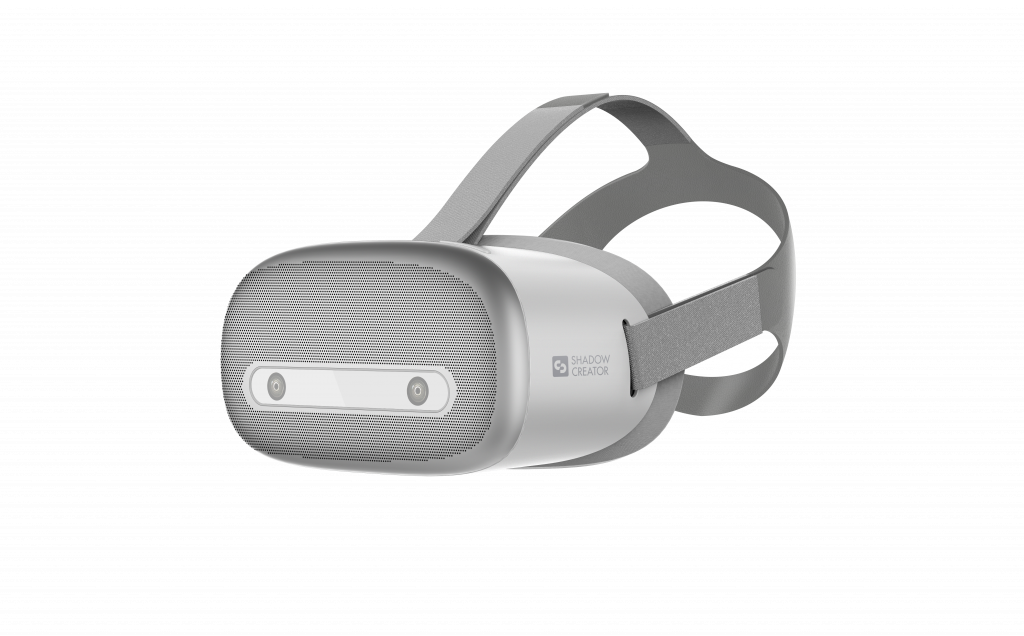
“Partnering with Vive and Wave benefits us two-fold,” said Jinxin Hu, COO of Shadow Creator. “It allows us to achieve more profit models through the open platform and also helps us connect with more global users, thus enhancing our company’s international reputation and brand influence.”
Shadow VR all-in-one HMD is equipped with a Snapdragon 835 Mobile VR Platform and Fresnel ultra-thin optical lens, using a self-developed holographic 3D UI Blue Cat and 6 degrees of freedom (DoF) capabilities. A 2K (2560×1440) HD display brings users a clearer and more realistic picture experience and the stereo dual-speaker sound effect makes the experience more immersive. Shadow VR is equipped with self-developed 6DoF controllers, which uses a nine-axis high-precision gyroscope, ray tracing, and a button layout compatible with most VR controllers today.
Vive Helps Enterprise Partners Work More Efficiently
Today, Vive also introduced VIVE Sync, a new virtual reality collaboration and meeting application specifically for enterprise that is part of the Vive Enterprise suite of services. Vive Sync is an intuitive collaboration tool where internal teams can meet in a virtual shared space, improving communication and productivity amongst organizations.
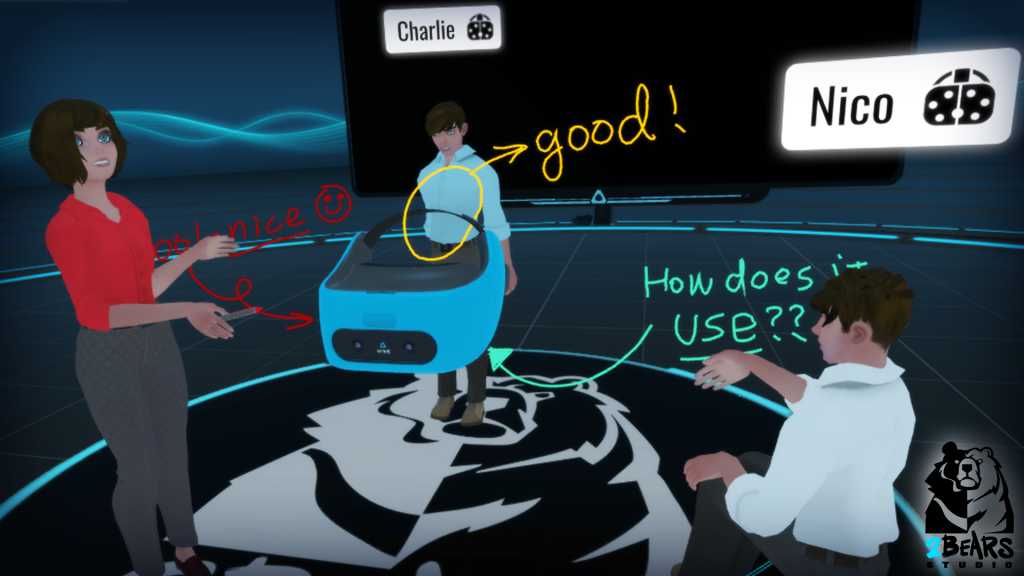
Additionally, at a media event in San Francisco today, Vive showcased Vive Sync, as well as a number of partners utilizing Vive Focus to demonstrate enterprise efforts:
For more on Vive for enterprise, please visit: https://enterprise.vive.com.
Website: LINK

Warframe – Fortuna is Now Available on Steam!
Welcome to Fortuna – Warframe’s biggest update ever. Explore the frigid landscape of Venus populated with new Corpus threats, subterranean mysteries and an ecosystem on the brink of destruction.
#LiftTogether
 Website: LINK
Website: LINK

Wireframe is our new twice-monthly magazine that lifts the lid on video games. In Wireframe, we look at how games are made, who makes them, and how you can make games of your own. And today, we’re releasing our very first issue!
Wireframe: the new magazine that lifts the lid on video games
Uploaded by Raspberry Pi on 2018-11-07.
In issue 1, Far Cry 4 director Alex Hutchinson talks to us about going indie. We look back at the British games industry’s turbulent early years; we explore how curves and probabilities shape the games we play; and we get hands-on with Nomada Studio’s forthcoming ethereal platformer, Gris.

Plus:
Cutting through the hype, Wireframe takes a more indie-focused, left-field angle than traditional games magazines. As well as news, reviews, and previews, we bring you in-depth features that uncover the stories behind your favourite games.

And on top of all that, we also help you create your own games! Our dedicated Toolbox section is packed with detailed tutorials and tips to guide you in your own game development projects.

Raspberry Pi is all about making computing accessible to everyone, and in Wireframe, we show you how programming, art, music, and design come together to make the video games you love to play — and how you can use these elements to build games yourself.
We want everyone to enjoy Wireframe and learn more about creating video games, so from today, you’ll also be able to download a digital copy of issue 1 of Wireframe for free. Get all the features, guides, and lively opinion pieces of our paper-and-ink edition as a handy PDF from our website.
You can find the print edition of Wireframe issue 1 in select UK newsagents and supermarkets from today, priced at just £3. Subscribers also save money on the cover price, with an introductory offer of twelve issues for just £12.
For more information, and to find out how to order Wireframe from outside the UK, visit wfmag.cc.
Website: LINK

Today’s Deal: Save 73% on Blendo Games Complete Collection!*
Look for the deals each day on the front page of Steam. Or follow us on twitter or Facebook for instant notifications wherever you are!
*Offer ends Saturday at 10AM Pacific Time Website: LINK
Website: LINK

Kynseed is Now Available on Steam Early Access!
You’ve been given the Kynseed, a mystical acorn that grows into a family tree where your choices manifest in its branches. Raise a family, farm the land, run shops, and explore a world where everyone ages. When you die, step into the shoes of your children and continue your legacy. Website: LINK
Website: LINK

Play ARK: Survival Evolved for FREE starting now through Sunday at 1PM Pacific Time. You can also pickup ARK: Survival Evolved at 60% off the regular price!*
If you already have Steam installed, click here to install or play ARK: Survival Evolved. If you don’t have Steam, you can download it here.
*Offer ends Monday at 10AM Pacific Time Website: LINK
Website: LINK

Steel Rats™ is Now Available on Steam and is 15% off!*
Wreck and ride in a visceral and ground-breaking evolution of the 2.5D action arcade genre, fusing destructive, octane-fuelled, motorbike combat and death-defying stunt gameplay, set in a visually stylised retro future world. Switch between four unique characters as you wreak havoc!
*Offer ends November 14 at 10AM Pacific Time Website: LINK
Website: LINK

ARK: Extinction – Expansion Pack is Now Available on Steam!
Finish your journey through the worlds of ARK in ‘Extinction’, where the story began and ends: on Earth itself! An Element-infested, ravaged planet filled with fantastical creatures both organic & technological, Earth holds both the secrets of the past and the keys to its salvation. As a veteran Survivor who has conquered all previous obstacles, your ultimate challenge awaits: can you defeat the gigantic roaming Titans which dominate the planet, and complete the ARK cycle to save Earth’s future?
 Website: LINK
Website: LINK

Today’s Deal: Save 30% on The Legend of Heroes: Trails of Cold Steel II!*
Look for the deals each day on the front page of Steam. Or follow us on twitter or Facebook for instant notifications wherever you are!
*Offer ends November 12 at 10AM Pacific Time Website: LINK
Website: LINK

I am delighted to share some big news today. The Raspberry Pi Foundation is part of a consortium that has secured over £78 million in government funding to make sure every child in every school in England has access to a world-leading computing education.
Working with our partners, STEM Learning and the British Computer Society, we will establish a new National Centre for Computing Education, and deliver a comprehensive programme of support for computing teachers in primary and secondary schools. This will include resources, training, research, certification, and more.

All of the online resources and courses will be completely free for anyone to use. Face-to-face training will be available at no cost to teachers in priority schools, and at very low cost to teachers in other schools. We will also provide bursaries to ensure that schools can release teachers to take part in professional development.

This level of investment in computing education is unprecedented anywhere in the world. It is a once-in-a-generation opportunity to transform the way we teach computing and computer science.
The announcement follows the Royal Society’s report from last November, which drew attention to the scale of the challenge. The report was quickly followed by a commitment from the Chancellor in last year’s budget statement that the government would invest £100 million in computing education across the UK. Earlier this year, the Department for Education launched a procurement process focused on England, and today’s announcement is the outcome of that process.

The consortium has been tasked with delivering three pieces of work:

One of the things I am most excited about is the amazing coalition of partners that has come together around the plans. The consortium brings together subject expertise and knowledge, significant experience of creating brilliant learning experiences and resources, and a track record of delivering high-quality professional development for educators. But we can’t do it on our own.
For example, we’re working with the University of Cambridge team that created Isaac Physics to adapt and extend that platform and programme to support teachers and students of Computer Science A Level.
Our friends at Google have provided practical support and a grant of £1 million to help us create free online courses that will help teachers develop the knowledge and skills to teach computing and computer science.

We’re working with the Behavioural Insights Team to make it as easy as possible for teachers to get involved with the programme, and with FutureLearn to provide high-quality online courses.
We’ll also be working in partnership with industry, universities, and non-profits, pooling our expertise and resources to provide the support that educators and schools desperately want. That’s not just a vague promise. As part of the bid process, we secured specific commitments from over 60 organisations who pledged to work with us to make our vision a reality.

Over the coming weeks we’ll be sharing more about our plans. In the meantime, here’s how you can get involved:

Improving computing education should be a priority for every education system and every government in the world. This announcement is focused on computing in schools in England because it’s about funding that has come from the government for that purpose.
I am proud that the Raspberry Pi Foundation will be playing its part in transforming computing education in England. But our mission is global, and our commitment is that the resources and online courses we create will be freely available to anyone, anywhere in the world.
If you are a policy maker outside of England and want to talk about how we could collaborate to advance computing education in your country, please get in touch. We’d love to help.
Website: LINK

Today’s Deal: Save 33 to 92% off on Aspyr Titles!*
Look for the deals each day on the front page of Steam. Or follow us on twitter or Facebook for instant notifications wherever you are!
*Offer ends Friday at 10AM Pacific Time Website: LINK
Website: LINK


The Armistice Steam Sale fundraiser is back, promoting peaceful gameplay in support of children still affected by war today. This year marks 100 years since the armistice that ended the First World War, so War Child has pulled together a bunch of the best-selling games to mark the occasion that are either non-violent or have been modified as part of this year’s Armistice campaign (Dick Wilde & Prison Architect).
Each game that is part of the sale is donating a % of developer proceeds to War Child UK & its US partner Children in Conflict to raise vital funds for children whose lives have been torn apart by war.
• ABZÛ (505 Games) – Donating 50% of developer proceeds / Discounted by 50%
• Broken Sword 5 (Revolution Games) – Donating 50% of developer proceeds / Discounted by 25%
• Democracy 3 (Positech) – Donating 100% of developer proceeds / Discounted by 25%
• Dick Wilde (PlayStack) – Donating 50% of developer proceeds / Discounted by 50%
• Machinarium (Amanita Design) – Donating 60% of developer proceeds / Discounted by 60%
• Mini Metro (Dinosaur Polo Club) – Donating 50% of developer proceeds / Discounted by 50%
• Prison Architect (Introversion Software) – Donating 50% of developer proceeds / Discounted by 75%
• Scanner Sombre (Introversion Software) – Donating 50% of developer proceeds / Discounted by 75%
• RiME (Six Foot) – Donating 50% of developer proceeds / Discounted by 50%
• The Talos Principle (Devolver Digital) – Donating 50% of developer proceeds / Discounted by 75%
• The Room (Fireproof Games) – Donating 100% of developer proceeds / Discounted by 75% Website: LINK

OVERKILL’s The Walking Dead is Now Available on Steam!
OVERKILL’s The Walking Dead is a four player co-op action FPS, where you fight the dead as well as the living. Set in The Walking Dead Universe, you and your group try to survive in a post-apocalyptic Washington D.C. Website: LINK
Website: LINK

Swords and Soldiers 2 Shawarmageddon is Now Available on Steam and is 10% off!*
Take command of mighty Vikings, sly Persians or brutish Demons! Destroy your opponent’s base while defending your own in this action-packed side-scrolling RTS!
*Offer ends November 13 at 10AM Pacific Time Website: LINK
Website: LINK

GRIP: Combat Racing is Now Available on Steam!
GRIP is a high octane, hardcore combat racer, packing ferocious speed and armed to the teeth with heavy weapons. Website: LINK
Website: LINK
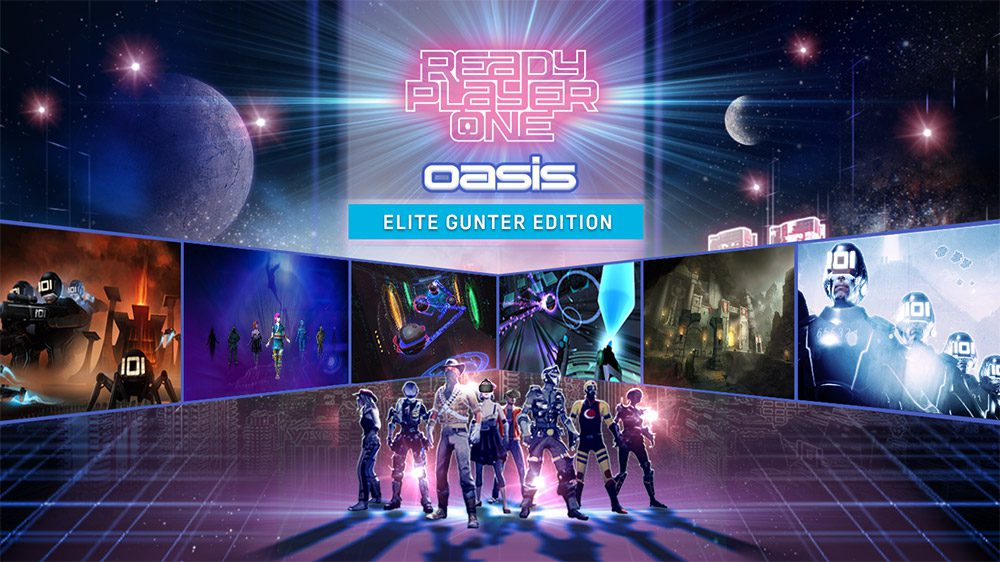
Earlier this year we took you to the OASIS with Ready Player One: OASIS beta, the official VR experience for the blockbuster movie Ready Player One directed by Steven Spielberg, and based on the book by Ernest Cline. Now we’re ready to go back with an expanded and upgraded Ready Player One experience – get ready to become an Elite Gunter!

If you’re a Viveport Subscription member, we have a new version of Ready Player One: OASIS for you to download – the Elite Gunter Edition. This expands the experience with new additions to many of the games included:
The VR version of the 80s coin-op classic, Gauntlet throws you into a seemingly endless dungeon with only your bow to fend off the undead hordes. In the Elite Gunter update, developer Directive Games has added a new winter environment, new level layouts, new room designs and of course, three new power-ups, including Exploding Arrows, Freeze Trap and Decoy Trap.
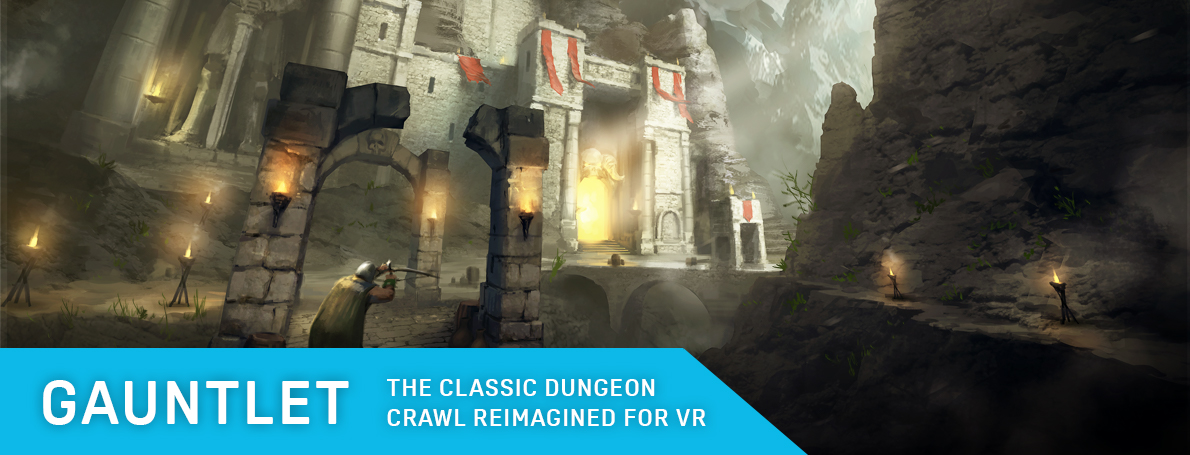
Steel Wool Studios’ wave shooter throws you up against IOI Sixers on the appropriately named Planet Doom. In the Elite Gunter update eight new levels are available, taking place in two new environments, where you’ll unlock even more weapons. You’ll need every upgrade available to take on heavy gunners, spider-mech hordes and two new bosses – including the ruthless mercenary i-R0k!
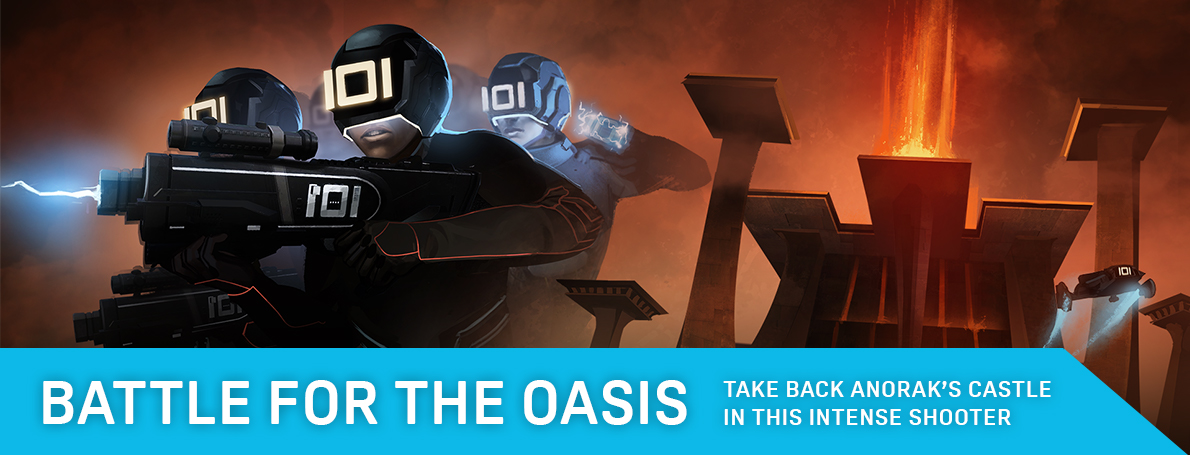 Smash
SmashThis VR homage to the classic Pong is getting much bigger with the Elite Gunter upgrade, adding nine new levels and three new boss battles to give you even more of a virtual workout.
 Fracture
FractureIf Smash is the RPO homage to Pong, then Fracture is a love letter to Breakout – a VR brick-smasher which has been updated with 24 new levels and three new boss battles in the Elite Gunter update.

If you haven’t signed up for Viveport Subscription yet – and with a 14-day trial, why not – then you can still experience the Elite Gunter content as standalone DLC. It’s available now for $19.99.
Now there are two different versions of Ready Player One: OASIS on Viveport you might be confused as to which one you need. Here’s a quick and easy guide.
WBIE LOGO, READY PLAYER ONE and all related characters and elements © & ™ Warner Bros. Entertainment Inc.
Website: LINK
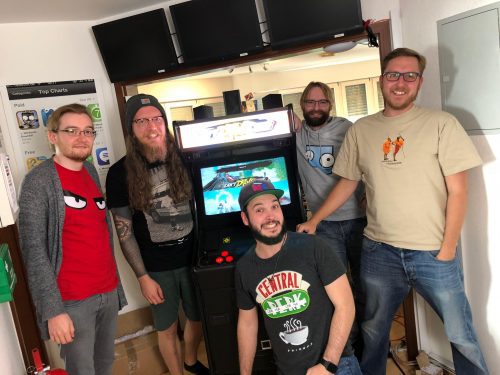
A Raspberry Pi–powered arcade display with hidden interactive controls won over the crowds at Gamescom. Rosie Hattersley and Rob Zwetsloot got the inside scoop.

Pixel Maniacs is a Nuremberg-based games maker that started out making mobile apps. These days it specialises in games for PC, Xbox One, PlayStation, and Nintendo Switch. You Can’t Drive is its first foray into gaming with a Raspberry Pi.
If you’re going to add a little something extra to wow the crowd at the Gamescom video games trade fair, a Raspberry Pi is a surefire way of getting you noticed. And that’s the way Pixel Maniacs went about it.
The Nuremberg-based games developer retrofitted an arcade machine with a Raspberry Pi to showcase its intentionally silly Can’t Drive This precarious driving game at Gamescom.
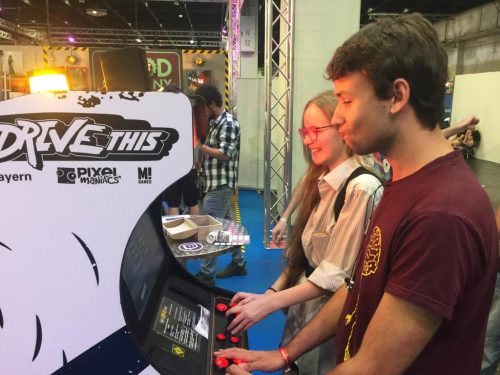
This two-player co-operative game involves one player building the track while the other drives along it.
Complete with wrecking balls, explosions, an inconvenient number of walls, and the jeopardy of having to construct your road as you negotiate your way, at speed, across an ocean to the relative safety of the next lump of land, Can’t Drive This is a fast‑paced racing game.
Pixel Maniacs then took things up a notch by providing interactive elements, building a mock 4D arcade game (so-named because they feature interactive elements such as motion cabinets). The fourth dimension, in this case, saw the inclusion of a water spray, fan, and console lights. For its Gamescom debut, Pixel Maniacs presented Can’t Drive This in a retro arcade cabinet, where hordes of gaming fans gathered round its four-way split screen to enjoy the action.
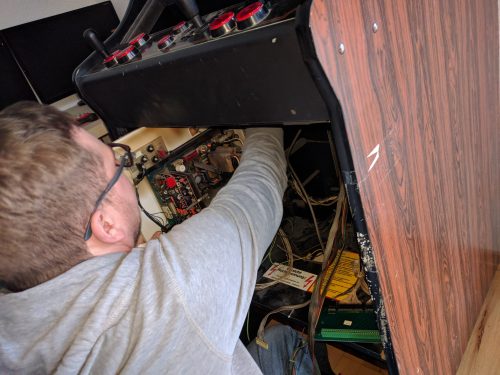
Getting to the heart of the matter and replacing the original 1980s kit with modern-day processors and Pi-powered additions
Adding Raspberry Pi gaming to the mix was about aiding the game development process as much as anything. Andy Holtz, Pixel Maniacs’ software engineer, told The MagPi that the team wanted an LED matrix with 256 RGB LEDs to render sprite-sheet animations. “We knew we needed a powerful machine with enough RAM, and a huge community, to get the scripts running.”
Pixel Maniacs’ offices have several Raspberry Pi–controlled monitors and a soundboard, so the team knew the Pi’s potential.
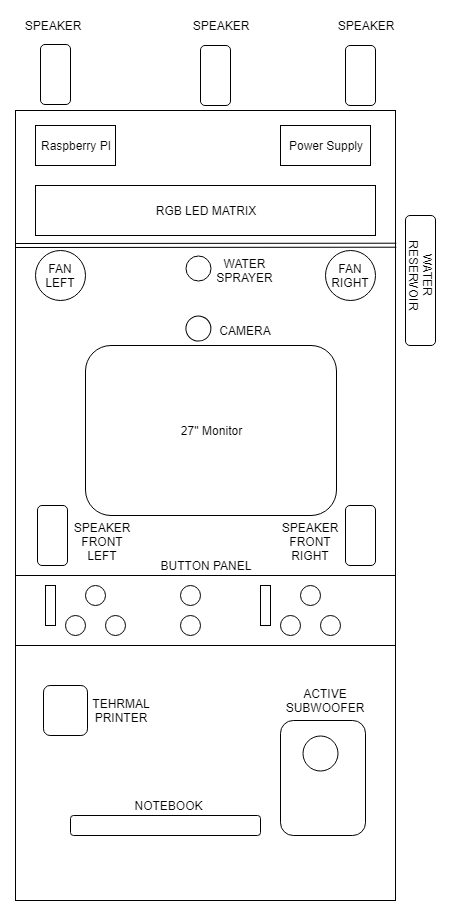
The schematic for the 4D arcade machine, showing the importance of the Raspberry Pi as a controller.
The arcade version of the game runs off a gaming laptop cunningly hidden within the walls of the cabinet, while the Raspberry Pi delivers the game’s surprise elements such as an unexpected blast from a water spray. A fan can be triggered to simulate stormy weather, and lights start flashing crazily when the cars crash. Holtz explains that the laptop “constantly sends information about the game’s state to the Raspberry Pi, via a USB UART controller. The Pi reads these state messages, converts them, and sends according commands to the fans, water nozzle, camera, and the LED light matrix. So when players drive through water, the PC sends the info to the Pi, and [the latter] turns on the nozzle, spraying them.”
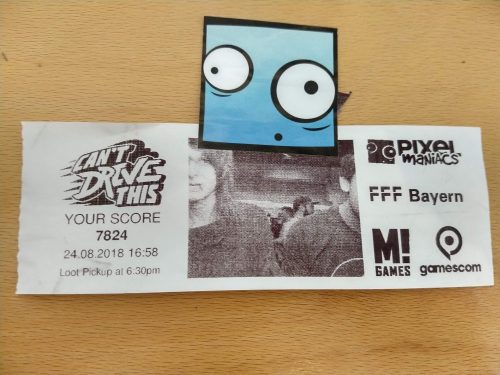
Having played your heart out, you get a photo-booth-style shot of you in full-on gaming action.
The arcade idea came about when Pixel Maniacs visited the offices of German gaming magazine M! Games and spied an abandoned, out-of-order 1980s arcade machine lurking unloved in a corner. Pixel Maniacs set about rejuvenating it, Da Doo Ron Ron soundtrack and all.
Ideas are one thing; standing up to the rigours of a full weekend’s uninterrupted gameplay at the world’s biggest games meet is something else. Holtz tells us, “The Raspberry Pi performed like a beast throughout the entire time. Gamescom was open from 9am till 8pm, so it had to run for eleven hours straight, without overheating or crashing. Fortunately, it did. None of the peripherals connected to the Pi had any problems, and we did not have a single crash.”
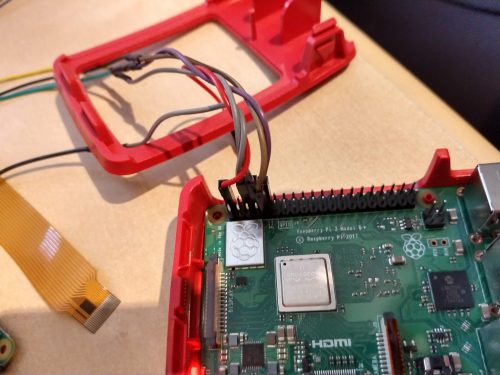
A Raspberry Pi 3B+ was used to trigger the water spray, lights, and fans, bringing an extra element to the gameplay, as well as rendering the arcade machine’s graphics.
Fans were enthusiastic too, with uniformly positive feedback, and one Gamescom attendee attempting to buy the arcade version there and then. As Andy Holtz says, though, you don’t sell your baby. Instead, Pixel Maniacs is demoing it at games conventions in Germany this autumn, before launching Can’t Drive This across gaming platforms at the end of the year.
This article was printed in The MagPi issue 75. Get your copy of The MagPi in stores now, or download it as a free PDF here.
Website: LINK

Today’s Deal: Save 75% on Infinifactory!*
Look for the deals each day on the front page of Steam. Or follow us on twitter or Facebook for instant notifications wherever you are!
*Offer ends Wednesday at 10AM Pacific Time Website: LINK
Website: LINK

Cheap Golf is Now Available on Steam and is 20% off!*
A retromoderrn and surreal minigolf comedy hosted by the infamous AI bot SUSAN. …//– Fling up and go FULL BOOP –\\…
*Offer ends November 12 at 10AM Pacific Time Website: LINK
Website: LINK